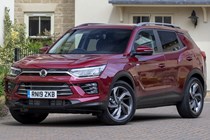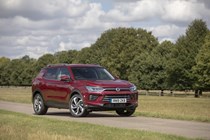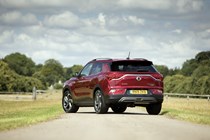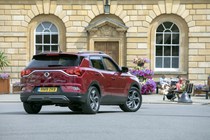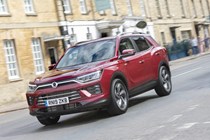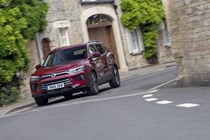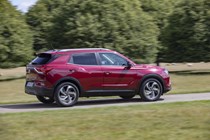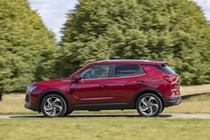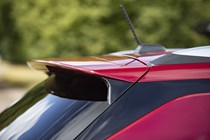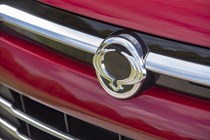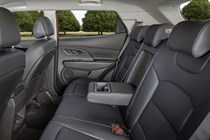
SsangYong Korando SUV (2019-2024) long-term test
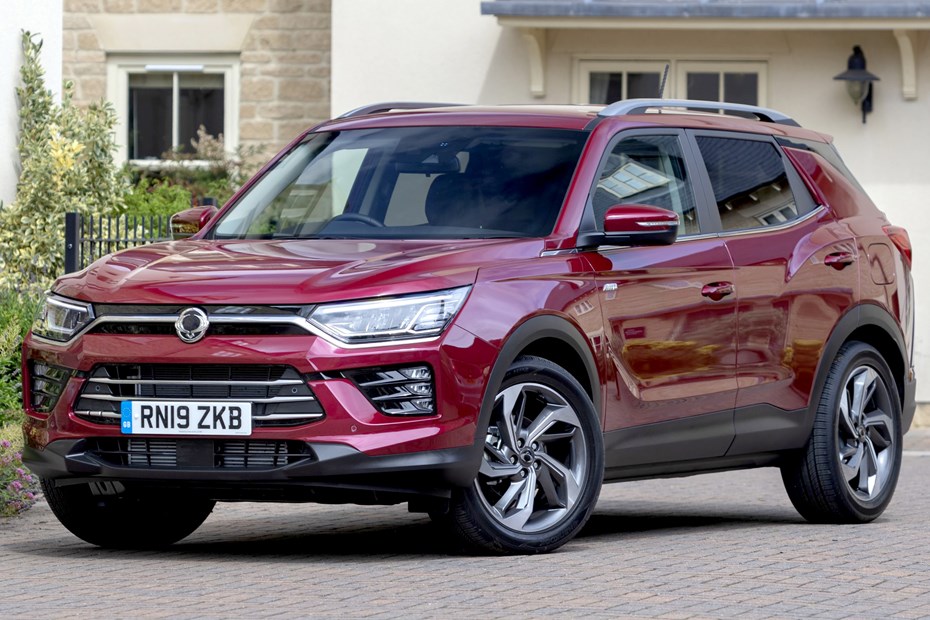
Update 1: Introduction
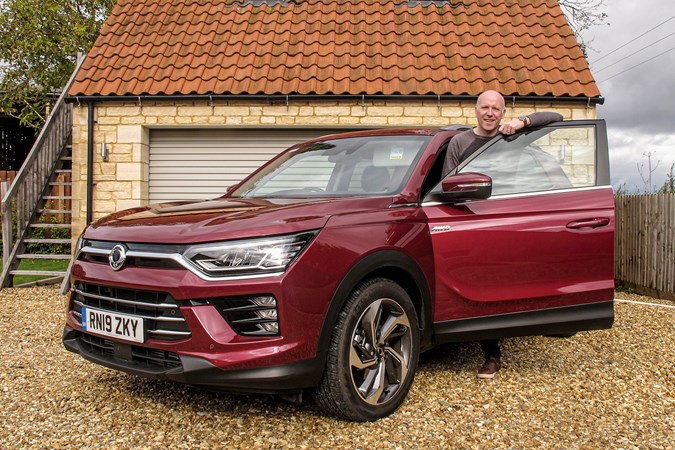
The all-new 2019 SsangYong Korando is light years ahead of its dated-at-launch predecessor. It’s catapulted the Korando back onto competitive terms with rival crossovers, rather than the unrefined towing specialist it once was. To see if the new found refinement translates into relaxing day-to-day ownership we’re running a Korando on the Parkers fleet for the next six months.
SsangYong has always been a budget brand but it has now positioned the Korando a little bit nearer the ultra competitive mid-priced market. Prices start at £19,995 for the bottom of the range ELX petrol model, but we’re testing the top of the range £31,995 Diesel Auto 4WD Ultimate grade. At that price this Korando is mixing it with some of the best-selling crossovers in the land and has its work cut out to stay competitive.
Our Korando is equipped with an all-new 1.6-litre diesel and is a step down from the 2.2 of the previous generation, although SsangYong claims it still maintains it’s two-tonne towing capacity. The engine is mated to a six-speed automatic transmission and has a choice of three driving modes, Normal, Sport and Winter. The Ultimate grade is not a cheap option but it does come with a bewildering list of kit. The highlights include:
- Heated and ventilated leather seats
- Smart powered tailgate
- Smart-key system with auto locking function
- 19-inch diamond cut alloy wheels
- 9.0-inch screen with Apple CarPlay, Android Auto and TomTom navigation
- 10.25-inch full digital colour cockpit cluster
My first impression of the Korando is it’s a handsome car. I’ve not been a great fan of SsangYong’s current design language. Most cars in the line-up look too boxy to me, as if someone’s tried to squeeze an oversized box in the back of each car. The Korando on the other hand looks sharp and perfectly proportioned. It’s at polar opposites compared to the previous generations clumsy, soft lines.
Climbing inside for the first time and it’s hard to believe this is a mid-priced brand let alone a budget brand. With the kit and spec that’s lavished on the interior it feels closer to some of the premium brands available. Yes there are some cheaper plastics left over from the lower grade models but there’s a sea of glossy black plastics and flashy infinity interior lighting effects to exude a premium feel.
Pressing the starter button for the first time and I’m greeted by a slightly clattery sounding engine. Again it’s a huge improvement on previous incarnations but not quite as refined and some other manufacturers diesels. Responsiveness of the engine combined with the auto transmission feels a little lethargic but there’s still plenty of pull and the Korando soon gathers momentum.
The ride is firm but still comfortable and means there’s little body roll in corners. That lethargic feel to the transmission carries through to the handling. The slow steering needs plenty of arm twirling in the corners and the car feels heavy and less dynamic when tackling more challenging bends. The result though is a thoroughly relaxing drive. The Korando doesn’t like to be hurried and is at it’s best when wafting down A-roads and dual carriageways.
In the next installment we’ll get the Korando working hard on a few longer trips across the country to test its practicality.
Mileage: 857
Indicated economy: 42.3mpg
Update 2: Practicality and comfort
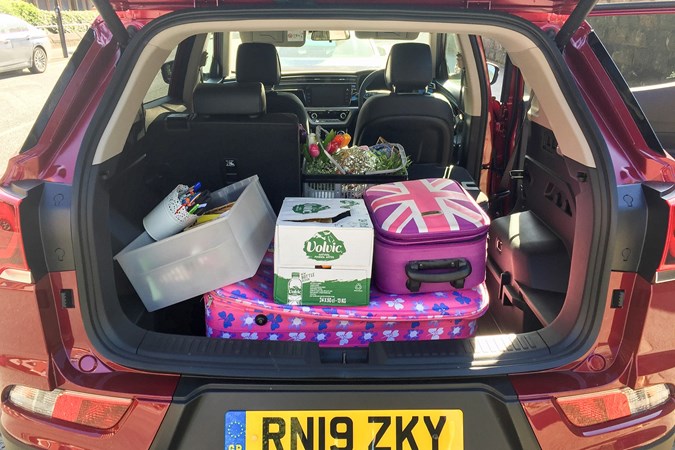
The first opportunity to really test the Korando’s practicality and comfort came when I dropped my daughter off at University for the first time. It was a 100+ mile trip with the car brimmed full of essential student stuff.
At first glance the boot seems on the small side with a high floor but the floor panels can be removed to reveal a deeper more average sized boot. The idea being, you have the option of a more convenient height for placing shopping without having to bend over. When you do remove the floor panels you can slot them into a couple of grooves that create smaller compartments within the boot floor, perfectly designed to stop smaller items rolling around in the back. Those panels were safely stored in the garage as we squeezed the last of the luggage into every available space. The rear seats drop easily with one click but don’t sit flush with the floor once the floor panels are removed.
With everything packed we spent the next couple of hours sat on motorways and A-roads heading for the University accommodation. This is territory the Korando excels in. The cabin is remarkably quiet, the seats extremely comfortable and the cruise control easy to operate. The seats are generous in width and offer a four-way power lumbar adjustment on the driver’s side with the Ultimate specification. The passenger side doesn’t have any but the support provided is ergonomically superior than most car seats anyway. I usually suffer from some back pain in most cars but the Korando’s are the best I’ve encountered for some time. The Ssangyong’s ride was best suited to higher cruising speeds on those motorways and A-roads, once I hit the slower city roads the firm ride felt less refined.
The sat-nav performed flawlessly and we arrived at our destination in the heart of Leeds. This Korando comes with a smart powered tailgate and if you hang around the rear of the car for a few seconds with the keys in your pocket the tailgate will open automatically. That was ideal for this unloading session as I frequently returned to the car hands full of empty boxes. The only flaw I found was a couple of months later as I walked to and from my garage with the keys in my pocket. I must’ve lingered for a fraction too long as I passed the rear of the car and the boot opened without me noticing, I just thought the beeping was the smart-key system unlocking and locking itself. It was a few hours before someone noticed and alerted me to the open tailgate.
We’d finally finished the unloading at the student accommodation and I treated myself to a blast on the ventilated seats to cool me down on what was an unseasonably hot day. They were so much more effective that air conditioning alone.
Since that day the Korando has moved a couple of pieces of furniture and the weekly shopping with the minimum of fuss although I’ve never got into the habit of using the boot floor divider, even when the load really warranted using it.
The Korando has also been deployed on the odd long distance trip with all four seats occupied. Reports on the legroom, headroom and comfort have been very favourable from the back, even with 6ft plus adults sat behind me with my seat set back to accommodate my own 6ft frame. I’ve checked out the rear seats myself and they have the same excellent lumber support as the front seats.
While the practicality is about average for a car in this market the comfort levels, especially in this Ultimate trim, are the Korando’s stand-out feature. I felt remarkably relaxed and calm driving this car, especially on longer journeys.
Miles: 2479
Economy: 40.3mpg
Update 3: Interior
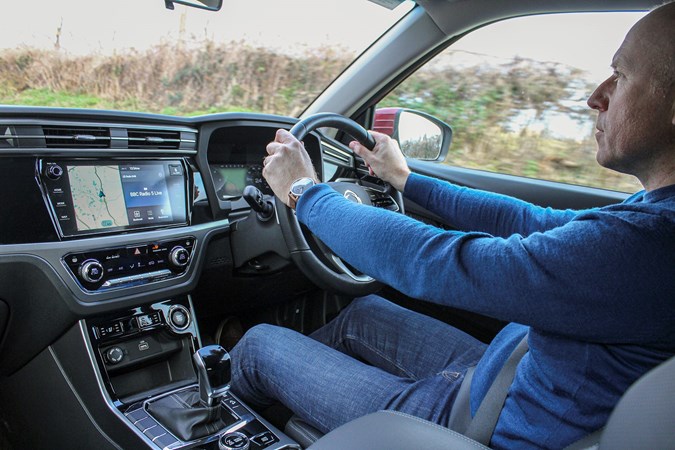
When I sat in the car for the first time I was taken aback at the quality of the interior. Not only was it an enormous leap from the previous generation, this Ultimate top spec model seemed to offer premium marque levels of refinement and kit. After now spending three months with the car has some of that initial response worn off?
The layout and positioning on the controls on the last model seemed sporadic and ill considered, on first impression it looked as if Ssangyong had finally got its act together. It’s not groundbreaking but the Korando employs common sense in producing an intuitive layout. I’ve very quickly learned my way around the controls so they’ve become second nature. My only criticism is that perhaps the stalks are loaded with too many controls. I’ve found when flicking my main beam on, if I push the stalk too hard I’ve accidentally flicked the headlights switch, which sits on top facing the driver, from auto to off. After doing this twice down unlit roads and nearly having a heart attack I now move the stalk with much greater respect.
Part of the positive first impression with the interior was created by the addition of a 10.25-inch digital cockpit cluster first showcased by Audi. While the look and feel doesn’t have the minimal chic of an equivalent VW Group unit it is nonetheless, pretty slick. There’s smart animation and transitions and what seems like an endless choice of information configurations. My favourite is the old fashioned dials with the sat-nav screen in between the two. I find it easier to glance down to the dial level than across the centre console for directions.
The 9.0-inch HD touchscreen is another highlight. Larger looking than most screens it’s mounted behind a bigger sheet of glass with additional touch sensitive side buttons making the screen look even greater in size. The interface is fairly intuitive but not as easy as using Apple Carplay and Android Auto which comes standard from the Ventura model upwards. I actually preferred the built in TomTom Sat-Nav to the Apple Carplay alternative. Although the Ssangyong can be fiddly to set a destination I found it more accurate than the Apple system. A frustrating hour in Leeds city centre can testify to that.
Part of the interior’s appeal is in the quality of the surfaces. There’s plenty of glossy black finishes that I had expected would be hard to keep clean. That’s not been the case, with most gloss surfaces kept away from the most used areas and the touchscreen’s matt finish that hides a lot of fingerprints. This Ultimate edition comes with flashy Infinity mood lighting. It’s a little reminiscent of an eighties nightclub and might not be to everyone’s taste but it does resemble some of the more configurable effects on premium models like Mercedes and Range Rover.
The overall design, apparently based on a guitar fretboard did feel very striking on first viewing. I was concerned it was over designed and would become annoying after a while. After a couple of months though, when I jumped into other cars their interiors felt, well, a bit boring. The only let down for the Korando is a common problem with budget brands. It doesn’t matter how much gloss and kit you throw at the top spec models some of the cheaper, harder plastics and finishes are left over from the bottom of the range models where entry price points are so important. Beautiful gloss and chrome finishes sit right next to hard grey shiny plastics. The quality of build too is also not quite up to the level of other mid-level rivals. While it’s a huge improvement on the previous generations it doesn’t compare to the solid nature of a Skoda Karoq.
Miles: 3157
Economy: 41.4mpg
Update 4: SsangYong Korando Ultimate – performance
Our SsangYong is fitted with a 1.5-litre turbo diesel engine offering 136bhp. That’s not a huge amount to shift this big 4x4 around, but there’s plenty of low-down grunt, so pulling away is reasonably paced. Progress gets more sedate the further you climb the rev range.

This diesel is less refined than some of the more expensive alternatives from rivals – it has a clattery sound at lower revs – but once it gets going the sound deadening keeps the noise to a minimum. The engine performs best at cruising speeds where it’s smooth and relatively quiet.
This Ultimate-spec Korando comes with a six-speed automatic gearbox that’s effortless unless you try to hurry it. Most competitors have seven or eight gears and that lack of ratios become apparent when you put your foot down. The car always seems to be searching for the correct gear and makes the car feel hesitant and sluggish. Select the Sport setting and the box performs no better with the engine noise becoming even harsher.
There are gear-shifting paddles mounted on the steering wheel, but it takes a lot of concentration to get those gear changes timed correctly. Occasionally the gearbox gets flummoxed at junctions, where it seems to take an age to choose a gear and when it does it’s either too high or too low. Drive the car in a calmer manner and gearbox couldn’t be more different. It’s lush and super smooth in way more modern and sophisticated dual clutch systems presently cannot match.
The sedate nature of the engine and gearbox carries through to the handling. The Ultimate Korando we’re running is endowed with plenty of kit and four-wheel drive. This makes it a rather heavy car, with a 1700kg kerb weight, and you can certainly feel it when cornering. While the car has plenty of grip and minimal body lean, the Korando has a definite lack of agility when changing direction.
A large percentage of my miles have been on bumpy country roads and the weight of the car combined with a rather firm ride has made the car feel a little unsettled at higher speeds. When on smoother roads, the car again feels completely different, and as before is a relaxing and serene drive.
SsangYong Korando safety tech
I’m highly impressed with the sophisticated safety features. They’re present right across the range and offer Autonomous Emergency Braking, Front Collision Warning, Front Vehicle Start Alert, Lane Departure Warning System and Lane Keeping Assist. The braking system has saved me a few times when other road users in front of me have braked hard and I’ve been momentarily distracted.
The lane departure system works well apart from on narrow country lanes when the car has no option but to straddle the white lines. The system just constantly beeps out a warning rather than working out the actual width of the road is not sufficient. Beyond the beeping, the Lane Keeping Assist system takes some getting used to as well. When you do stray across a lane without indicating the car will automatically make a corrective steering adjustment. That feels a little unnerving at first, having the car steer for itself, but you can override it by just pushing harder against it with the wheel. On narrower corners with good road markings you do sometimes feel as if you’re slightly fighting against the system as it’s harder to keep within the white lines.
Recently the majority of my journeys have been a little shorter and the economy has suffered, sometimes dropping as low as 34mpg rather than the usual average in the low-40mpg range. Having permanent all-wheel-drive does impact on fuel consumption, and unless you feel it’s absolutely essential I would consider one of the front wheel drive options.
Mileage: 6916
MPG: 37.4



